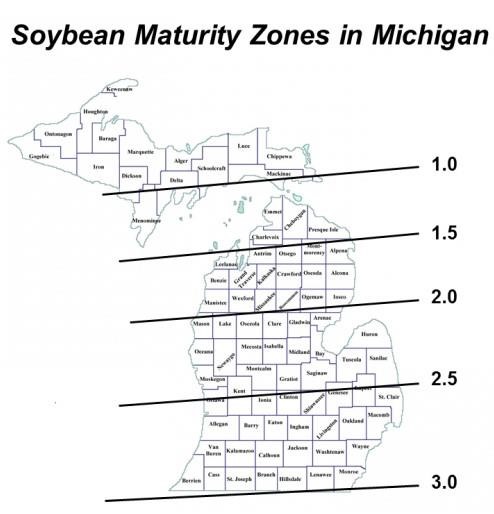By Michael Staton
Planting double crop soybeans is generally not recommended in Michigan due to the high risk associated with this practice. However, there are producers in southwest Michigan that raise double crop soybeans successfully. Being able to apply irrigation water significantly improves the probability of success. Double crop soybean yields range from 0 to 30 bushels per acre depending on planting date, available soil moisture and the date of the first killing frost in the fall.
Soil moisture is the most critical factor to consider as most double crop failures are caused by a lack of moisture. Both surface and subsurface moisture levels are important. If there is not enough moisture near the soil surface to germinate the seed, critical time and yield potential will be lost. If the subsoil is dry due to a lack of rainfall in June, the double crop soybeans will be totally dependent on rainfall for the remainder of the season and will probably fail to make a crop. “If June is dry, do not try” is a good quote to remember.
 Figure 1. Soybean maturity zones in Michigan. Adapted from Zhang, L.X, Kyei-Boahen,S, Zhang, J., Zhang, M.H., Freeland, T.B., Watson, C. E., Jr., and Liu, X.M. 2007. Modifications of optimum adaption zones for soybean maturity groups in the USA. Crop Management.
Figure 1. Soybean maturity zones in Michigan. Adapted from Zhang, L.X, Kyei-Boahen,S, Zhang, J., Zhang, M.H., Freeland, T.B., Watson, C. E., Jr., and Liu, X.M. 2007. Modifications of optimum adaption zones for soybean maturity groups in the USA. Crop Management.